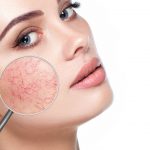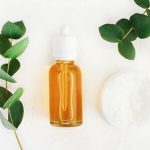Dry skin and hair are common problems when the weather gets colder. Many people produce less sebum (oil) to naturally lubricate their skin as the air gets cooler and drier. Other contributing factors include less vitamin D from sun exposure and irritation from cold wind in the face. Indoors, the air gets drier as the heat comes on, and a closed-up home can lead to mold and toxin exposure, both of which can contribute to skin problems.
Other problems that can develop in the fall and winter months include dandruff, chapped lips, and aggravation of eczema. Some people further develop scaling, dull skin and hair, and even cracking and painful skin. Much of the damage to dry skin occurs because of disruption of the normal epidermal (skin) barrier, allowing skin moisture to evaporate out, and irritants and allergens to get in more easily.
There are several ways to protect yourself against the skin damage that cooler weather brings. These remedies include things you can do both internally and externally.
Bathe Less in the Colder Months
Perhaps the most important way to prevent dryness is to spend less time in the bath or shower, less often, and with less hot water and soap. When you do bathe, use a cleansing bar with extra oils added, to leave moisture on the surface of the skin.
Use the Right Moisturizer
Moisturizing wet skin after bathing with creams or oils is essential. No matter what product you use, it’s important to apply it when skin is still wet or damp, to lock moisture in.
If you tend towards eczema, products with ceramides in them may be more helpful in restoring the barrier. Numerous skin repair creams are available with antioxidants, to give your skin extra nourishment.
When choosing a cream to soothe your skin, it’s important to pay attention to the ingredients in it. All creams include a detergent to keep oil and water mixed, and a preservative to keep bacteria and fungus from growing. These components, along with fragrance and other ingredients, can cause allergic reactions in some people, especially when put on irritated or inflamed skin. Many creams contain the same ingredients, so it might take some detective work to figure out what your skin can and can’t tolerate. Generally speaking, some ingredients to avoid in creams include:
Formaldehyde releasers, like DMDM hydration
Imidazolidinyl urea
Quaternium-15
Parabens
Exfoliate with face scrubs, brushes, and exfoliators;
Your winter skincare routine would not be complete without regular exfoliation. Since the skin barrier function slows in winter, dead skin cells are more likely to build up.
For those with sensitive skin, using a pure oil instead of a formulated cream might be a better way to moisturize without irritation. You’ll need to reapply every few hours to keep skin hydrated. The thicker the oil, the longer it will stay on and keep working. Olive oil thickened with beeswax and shea butter are two examples of longer-lasting applications.
Some oils you may want to try moisturizing with include:
Almond oil
Safflower oil
Coconut oil
Olive oil
Jojoba oil
Argan oil
Shea butter
Internal Remedies for Dry Skin
Drinking more water—at least four glasses per day in addition to what you drink with meals—is important for combating dry skin in cold weather. Adding omega-3s to your diet can help to keep skin hydrated as well.
Hair can become dull if overwashed, especially in cold weather when the skin makes less oil. People with dandruff and seborrheic dermatitis may find that their scaling increases during this time. Taking omega-3 fish oils or eating flaxseed can help with both dry skin and hair.
Cold weather skin care can be a challenge, because it means changing habits, and because some products may cause irritation in damaged skin. Finding the right balance of internal and external products can help prevent the cycle of inflammatory changes that comes from a disrupted skin barrier and enhance your appearance throughout the fall and winter.



